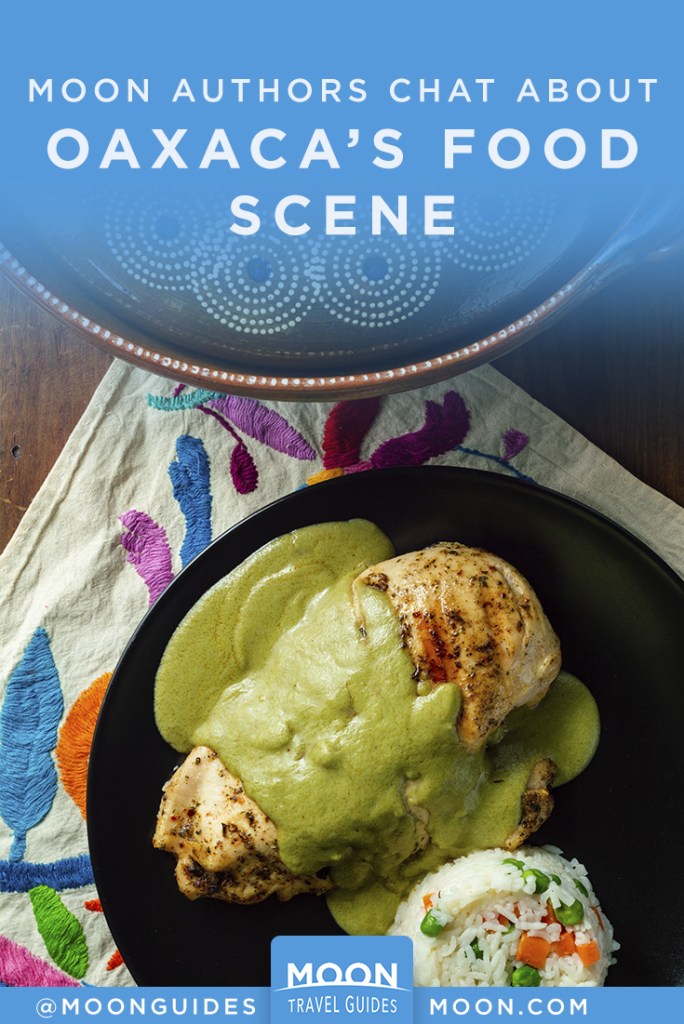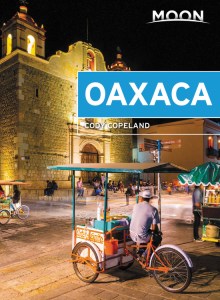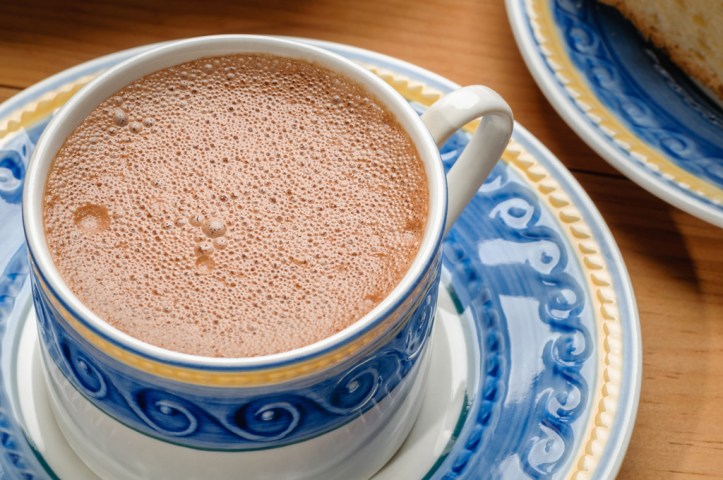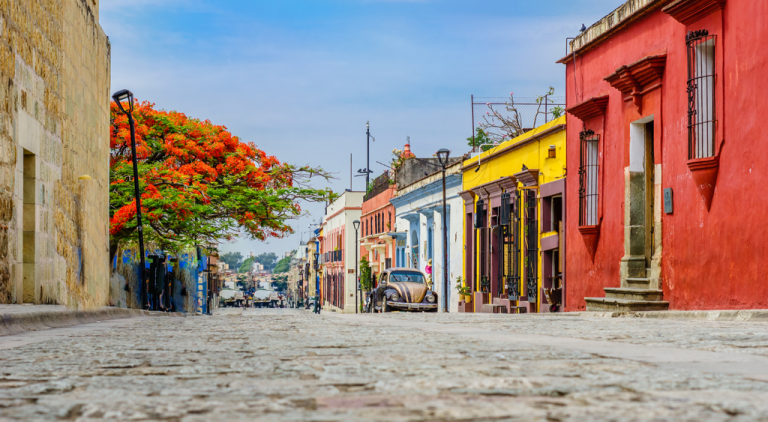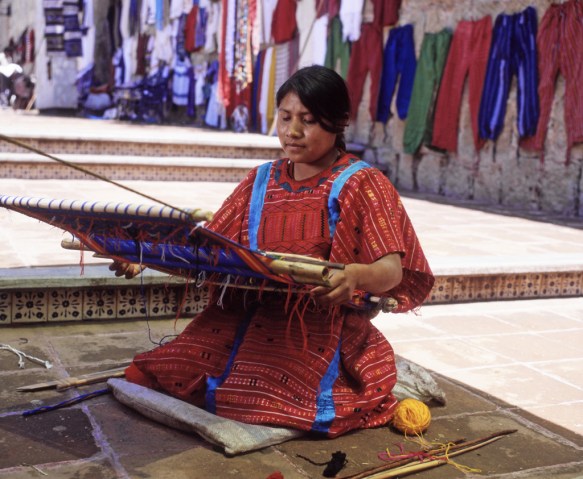Q&A with Cody Copeland on Oaxaca’s Food Scene
It’s no surprise that Oaxaca boasts some of the best food in the world. To eat in Oaxaca is to venture into landscapes of flavor that is so different from anywhere else in the world.
Julie Meade, author of Moon Mexico City and Moon San Miguel Allende, chatted with Cody Copeland, our Moon Oaxaca author about what makes Oaxacan cuisine stand out compared to other foods in Mexico, and where to you can find the best food and drink in Oaxaca.
Julie Meade: Where would you take a visitor to eat or drink on their first trip to Oaxaca?
Cody Copeland: Any first bites should be taken in the Benito Juárez and 20 de Noviembre markets, just southwest of the zócalo. Cut the chill of the desert morning with hot chocolate or café de olla, black coffee made in a clay pot and sweetened with a type of brown sugar called piloncillo. Fill up for the day’s adventures on a banana leaf tamal full of dark mole sauce and chicken in the 20 de Noviembre market.
For lunch, I recommend some enchiladas de coloradito, a dark red mole sauce, or an empanada de amarillo, which you’ll find being sold out of baskets at the entrances to the Benito Juárez market. This recipe of the Oaxacan classic amarillo sauce, which means “yellow” despite it’s dark orange hue, is from San Antonino Castillo Velasco, known for its unique variation of the recipe.
For an early dinner, head to the Pasillo de Carnes Asadas, or the Hall of Grilled meats. Just follow the smoke drifting from the east side of the 20 de Noviembre market to the row of grills and hawkers of tortillas, salsas, veggies and more to make your own tacos right there at the table.
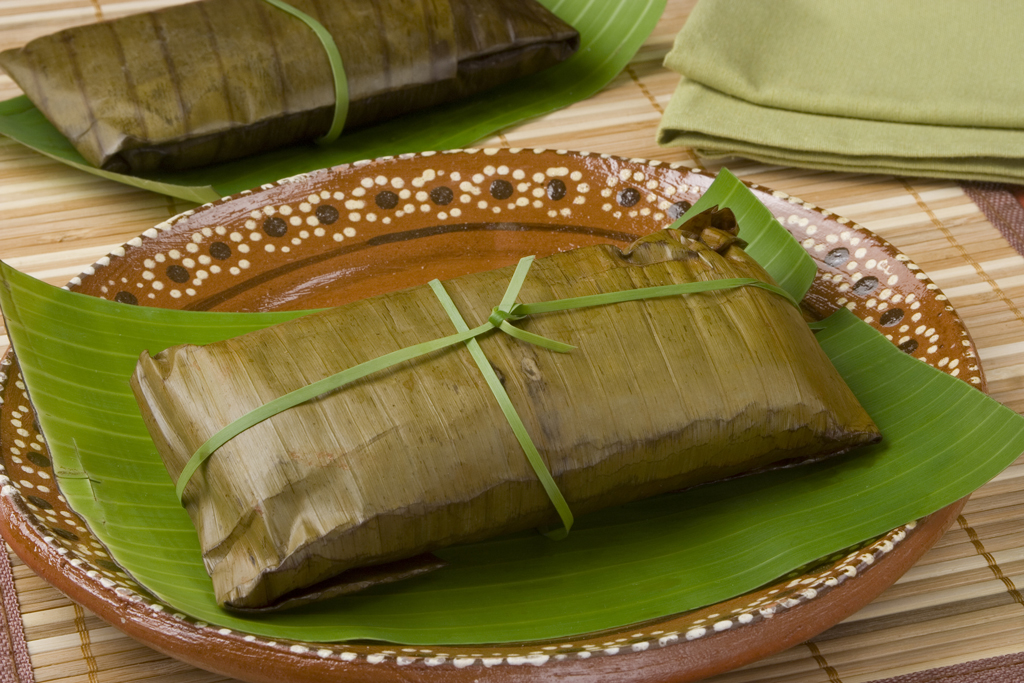
Julie: What stands out about Oaxacan food compared with cuisine in other parts of Mexico?
Cody: I’d say it’s the same thing that makes Oaxaca as a place stand out from any other in the world, including elsewhere in Mexico: the boundless imagination with which Oaxacan people approach the things they’re passionate about. For example, the thankfully on-its-way-out tour mythology would have us believe that there are seven different types of mole here, but any chef worth her salt in Oaxaca will tell you that you’ll find a distinct mole recipe in just about every municipality in the state. (With 570, Oaxaca has more municipalities than any other state in the country.)
The joke that all Mexican food is just the same ingredients rearranged in different formations is even chuckled at down here, but Oaxacan kitchens have found ways to make their tortilla-based snack food called antojitos really stand out. One sneaky little trick is the lard made from frying pig skins they call asiento. This greasy deliciousness is the key ingredient to the tlayuda, basically an overgrown tostada or quesadilla. But the asiento brings the flavors of the beans, veggies, grilled meat and quesillo cheese together in a way that makes the dish stand out from other antojitos in Mexico. This and the variety of moles are really just a couple examples within a gastronomical lexicon that continues to surprise me the more and more I get to know this place.
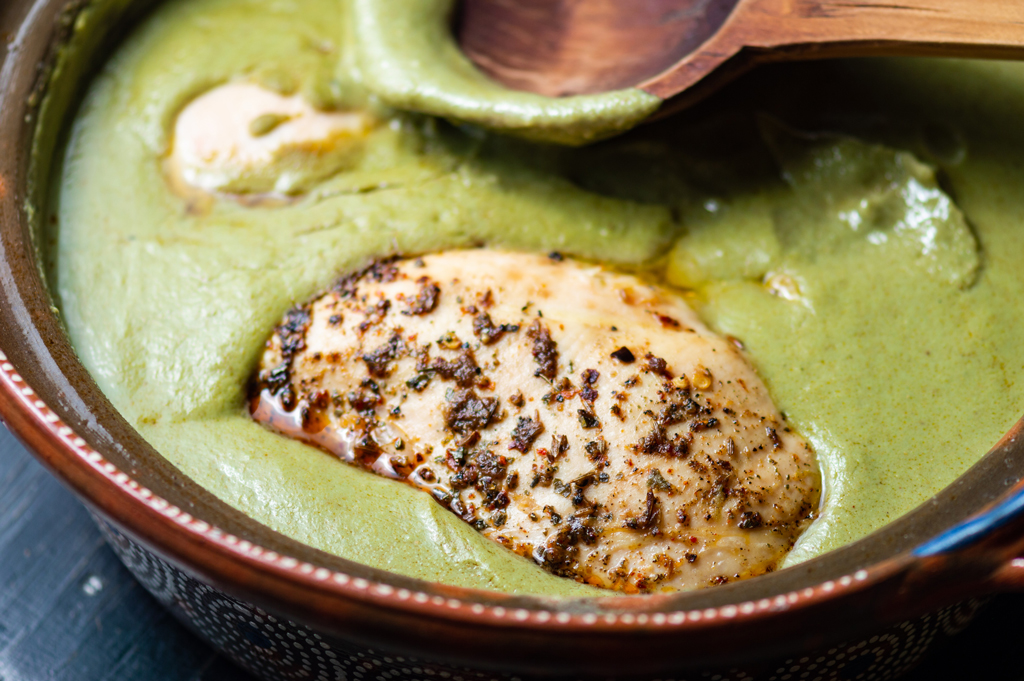
Julie: When it comes to eating, Oaxaca City is the best known destination. But are there other destinations in the state that food-obsessed travelers should know about?
Cody: Anyone looking to truly experience Oaxacan cuisine should check out the La Mixteca and Istmo de Tehuantepec regions. They do tlayudas differently out in La Mixteca. They’re more often the open-faced, tostada-style and tend to have fewer ingredients actually in the tlayuda itself. It’s more common out here for them to be served with an array of piquant local herbs and chiles that can be mixed and matched to create various flavors throughout the meal. I’ve even had one with slices of hard boiled eggs on it in Nochixtlán.
Out in the Istmo, you’ll find gargantuan tlayudas stuffed to the max with as many different types of meat as you want. The word “súper” is often used to describe them on menus. You’ll also find another tortilla-based antojito out here called a garnacha. It’s like a little deep-fried tostada, or the sopes you’ll remember from Mexico City streets. These are topped with tangy cabbage, crumbly cheese and spicy salsa. Sometimes they fry chicken in this grease and call it pollo garnachero. I learned about it late in my relationship with the state, but it’s now one of my favorite dishes in Oaxaca.
One of the best restaurants in the state is in the surfer’s paradise of Puerto Escondido. Absolutely everything on the menu at Las Juquileñas is fantastic, and must be washed down with a pitcher of their agua de cacahuate, a sweet drink made with peanuts.
Julie: Tell me about mezcal. When should you drink it, where should you drink it, how should you drink it?
Cody: I can tell you for sure that you shouldn’t drink it the way I used to drink it. I actually completed seven years of sobriety from alcohol this July, but I did drink quite a bit of the stuff when I lived in Oaxaca way back when. It’s funny that now that I’ve learned so much about it, how it’s produced, what types of maguey (as agave is called in Oaxaca) are used and where they’re grown, I don’t drink a drop of it. I often get confused looks from mezcaleros when I turn down a drink after a lengthy conversation about origins and production methods.
What I like about mezcal culture in Oaxaca is that responsibility really is part of the whole experience. If you want to get to know a type of mezcal, you don’t chug it, as was my unfortunate wont, you observe the effects as you sip and savor it. The small bars called mezcalerías all over downtown Oaxaca offer tasting experiences like this, and have very well informed bartenders, or often the owners themselves. Check out places like In Situ, El Cortijo, Los Amantes and others for tasting and educational experiences.
And a tour with Alvin Starkman of Mezcal Educational Tours is a must for anyone looking to learn about mezcal production, meet producers and buy directly from the source.
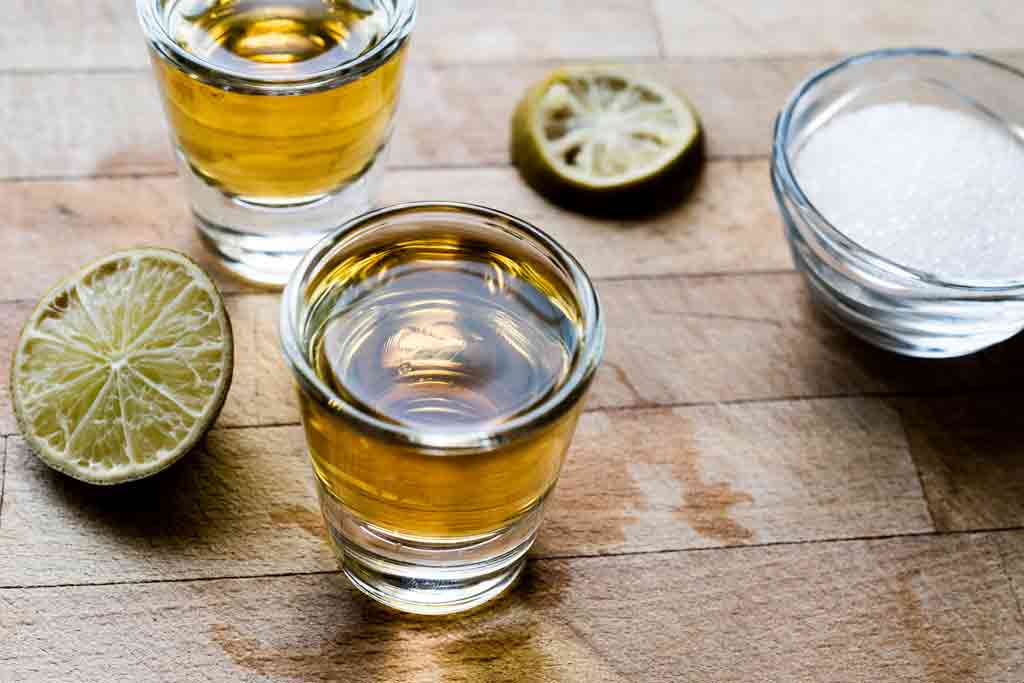
Julie: How do you measure the quality of mezcal?
Cody: Mezcal producers use a section of bamboo with a hole in the bottom to pour mezcal into a bowl made from the dried shell of the jicama gourd. What they’re looking for are sturdy bubbles. The longer the bubbles stay intact, the higher the quality of the mezcal. Then, as with any alcoholic beverage, much of the quality lies on the tongue of the taster.
Julie: Oaxaca is a very traditional place, but, as more chef-driven restaurants open and more food-oriented travelers visit the area, has Oaxacan food changed over the last decade?
Cody: Yes, it has, but Oaxaca has made sure that those changes have been for the good. Its gastronomy is just one of dozens of living traditions in the region that are evolving to this day. I once had an in-depth conversation about this with an experienced Oaxacan chef and restaurant owner who spoke of Oaxacans’ sense of tradition and their ability to hold onto it while still accepting outside influence. But that influence must be controlled. Iconic Oaxacan visual artist Francisco Toledo led the fight to keep a McDonald’s out of the Historic Center, and this has only strengthened the bond that Oaxacan people feel to their food.
As for the chefs experimenting with Oaxacan classics, I’ll admit I’m quite judgmental. I’m just not a fan of a place that charges ten times that of a street vendor, but then delivers about a tenth of the quality. The fancy restaurants I’ve included in my guidebook have passed this test, while many that have been left out did not. Trust me on this one.
Oaxaca still very much offers authentic culinary experiences, even in the heavily touristed capital city, and especially out in the regions where fewer visitors tend to go.
Julie: What’s your favorite memory or memories of a meal in Oaxaca — anywhere in the state, at any venue?
Cody: I’d have to say the time I discovered pollo garnachero in Juchitán. I was told to go to a certain corner and look for la banqueta, the sidewalk. It was not hard to miss what I was looking for, as the sidewalk rose up four or five feet from street level and atop it a short woman in a plaid apron appeared to be doing battle with some kind of creature spitting fire and smoke. This was the charcoal fire beneath the boiling oil that was flaring up as the tough isthmus winds raked through the glowing embers.
Then I tried the stuff and absolutely fell in love. As a friend who was not as impressed as I was told me later, it is just fried chicken, but the nuance in the flavor of the garnacha oil is so delightful, in my opinion, that the dish is now in my top three, and I love remembering the feeling of discovery that first night I had it.
Julie: There are lots of iconic Oaxacan foods — tlayudas, moles, grasshoppers, mezcal, quesillo — but are there any lesser known dishes that travelers should seek out?
Cody: I’ll leave a bit of mystery in my answer to this one and simply recommend that anyone seeking these things out should just go to the Istmo de Tehuantepec. Go to the Juchitán market at dusk and eat everything (well, use your best judgment).
Start planning your adventure.
By clicking ‘Sign Up,’ I acknowledge that I have read and agree to Hachette Book Group’s Privacy Policy and Terms of Use
What to read next:
Pin for Later
